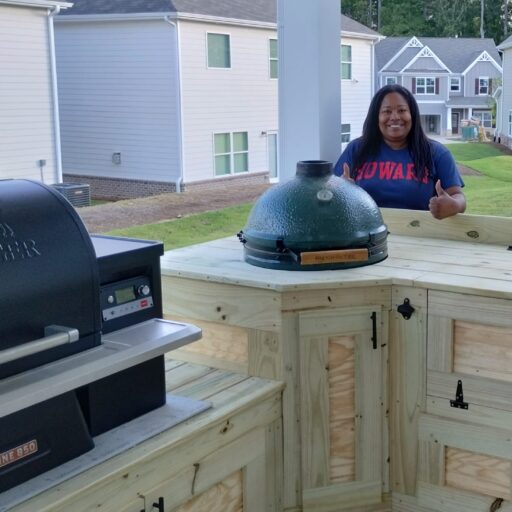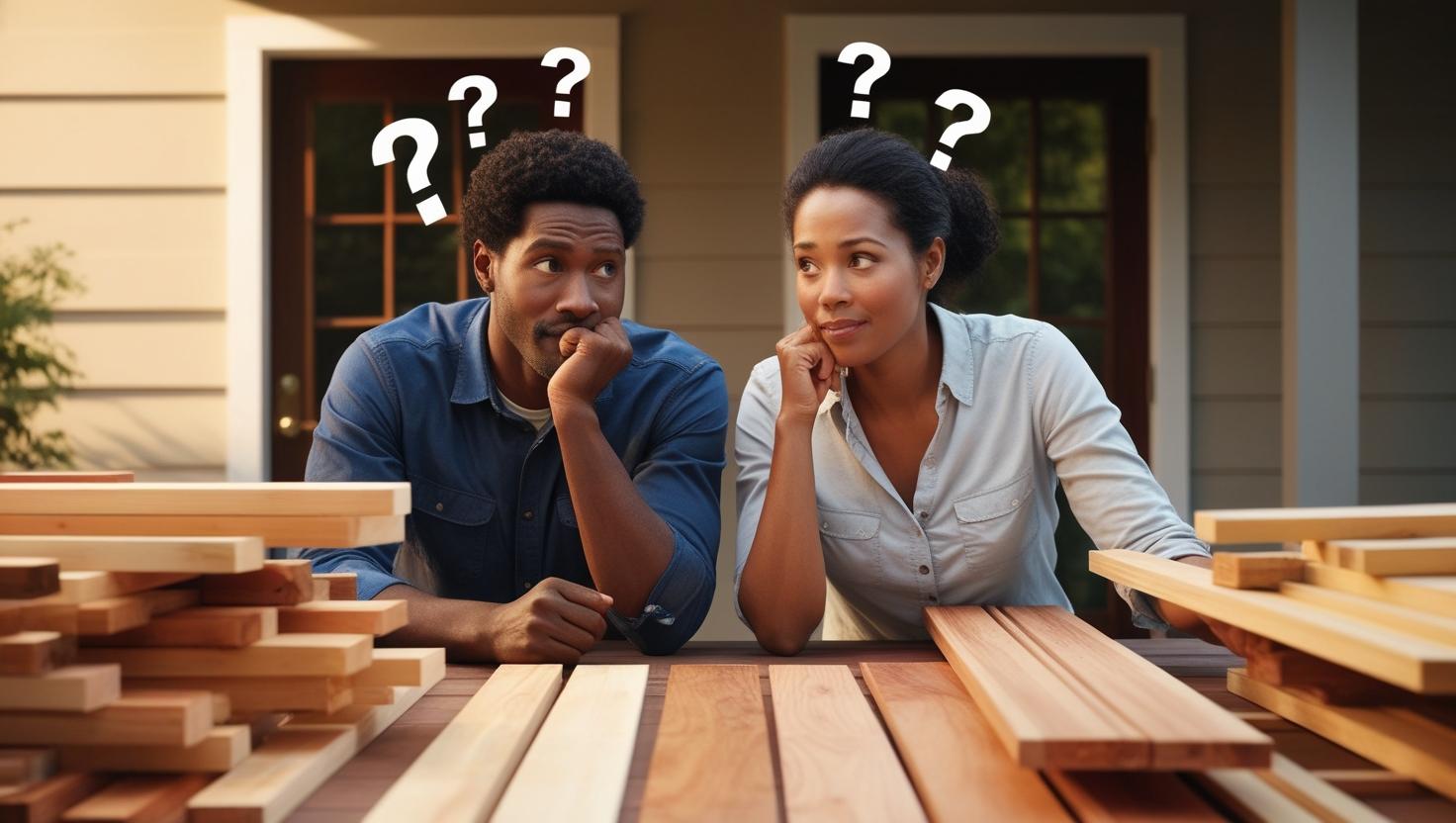Building an outdoor kitchen is an exciting way to extend your living space, create a hub for entertaining, and enhance the value of your home. While materials like concrete and stone are common choices, using wood and lumber offers a unique aesthetic and natural charm that can’t be replicated. Wood provides warmth, versatility, and a range of design options, making it a popular and cost-effective choice for outdoor kitchens.
In this post, we’ll explore the different types of wood that can be used for outdoor kitchen construction, including cedar, cypress, mahogany, pressure-treated lumber, and Ipe wood. We’ll also discuss the pros and cons of each, as well as their price differences, to help you choose the best material for your dream outdoor kitchen.
The Beauty and Benefits of Using Wood
Wood is a timeless material for outdoor kitchens, offering natural beauty and adaptability. It’s ideal for creating custom cabinetry, countertops, pergolas, and other structural elements. Unlike concrete or stone, wood is easier to work with and can often be more affordable, especially for DIY projects or budget-conscious builds. Additionally, the wide variety of wood types allows you to balance cost, durability, and style according to your specific needs.
Types of Wood for Outdoor Kitchens
- Cedar
- Overview: Cedar is a popular choice for outdoor projects due to its natural resistance to decay and insects. It’s lightweight yet durable, making it easy to work with.
- Pros: Resistant to moisture and rot, naturally aromatic, and aesthetically pleasing with its warm reddish hue.
- Cons: Softer than hardwoods, so it may dent or scratch more easily.
- Price: Mid-range, costing about $4–$8 per square foot.
- Cypress
- Overview: Cypress is another excellent choice for outdoor use, known for its natural oils that repel insects and resist decay.
- Pros: Lightweight, easy to cut and shape, and offers a beautiful golden color that can weather gracefully over time.
- Cons: Slightly more expensive than cedar and may require regular sealing for maximum longevity.
- Price: Around $6–$10 per square foot.
- Mahogany
- Overview: Mahogany is a premium hardwood prized for its rich color and durability. It is highly resistant to weather and insects, making it ideal for outdoor applications.
- Pros: Dense and strong, with a luxurious appearance and excellent longevity.
- Cons: Higher cost and heavier to work with, requiring specialized tools for installation.
- Price: High-end, costing $8–$15 per square foot.
- Pressure-Treated Lumber
- Overview: Pressure-treated lumber is wood that has been chemically treated to resist rot, decay, and pests. It’s a budget-friendly option often used for structural framing.
- Pros: Affordable, readily available, and durable for outdoor use.
- Cons: May not be as visually appealing as natural wood species and requires sealing or painting for aesthetics.
- Price: Low-cost, typically $2–$5 per square foot.
- Ipe (Brazilian Walnut)
- Overview: Ipe is an exotic hardwood known for its extreme density, strength, and natural resistance to weather, rot, and pests.
- Pros: Nearly impervious to the elements, incredibly durable, and has a rich, dark appearance.
- Cons: Expensive and challenging to work with due to its density.
- Price: Premium, ranging from $15–$25 per square foot.
Wood vs. Concrete and Stone
While concrete and stone are durable and low-maintenance, they lack the warmth and customization options that wood provides. Wood is easier to work with, making it ideal for custom designs and DIY enthusiasts. It’s also lighter and more versatile, making it a great choice for outdoor kitchens on decks or in areas where heavy materials might not be practical. However, wood does require regular maintenance—such as sealing or staining—to protect it from the elements and prolong its lifespan.
Cost Considerations
The price of your outdoor kitchen will vary depending on the type of wood you choose and the size of your project. Pressure-treated lumber is the most budget-friendly option, while Ipe wood is the most expensive but offers unparalleled durability. Cedar, cypress, and mahogany fall in the mid-range, providing a balance between cost, aesthetics, and longevity.
Here’s a quick summary of the price ranges:
- Pressure-Treated Lumber: $2–$5 per square foot
- Cedar: $4–$8 per square foot
- Cypress: $6–$10 per square foot
- Mahogany: $8–$15 per square foot
- Ipe: $15–$25 per square foot
Choosing the Right Wood for Your Outdoor Kitchen
When selecting the best wood for your outdoor kitchen, consider factors like your budget, the climate in your area, and your desired aesthetic. If you’re looking for a cost-effective option, pressure-treated lumber or cedar are excellent choices. For those who want a more luxurious look and long-term durability, mahogany or Ipe may be worth the investment.
Whichever material you choose, wood is a versatile and timeless choice that will make your outdoor kitchen both functional and beautiful. With proper care and maintenance, a wood-built outdoor kitchen can provide years of enjoyment and elevate your outdoor living space.
Are you ready to start building your dream outdoor kitchen? Let’s bring your vision to life!


Leave a Reply
You must be logged in to post a comment.